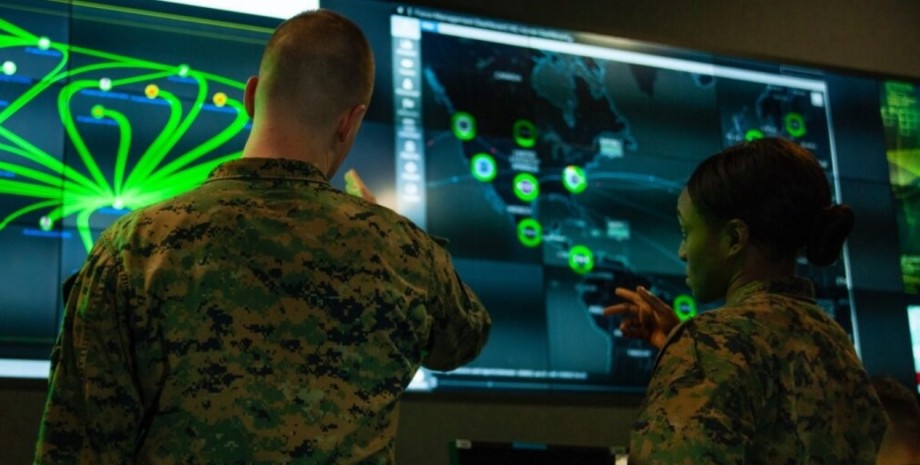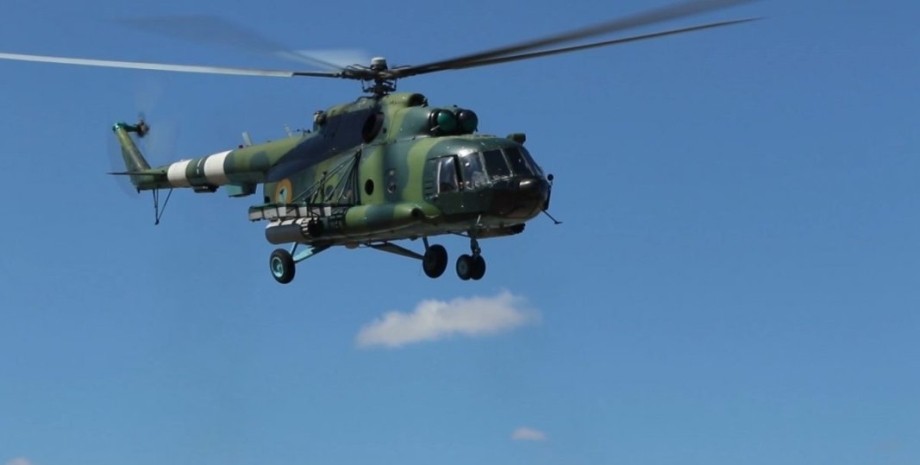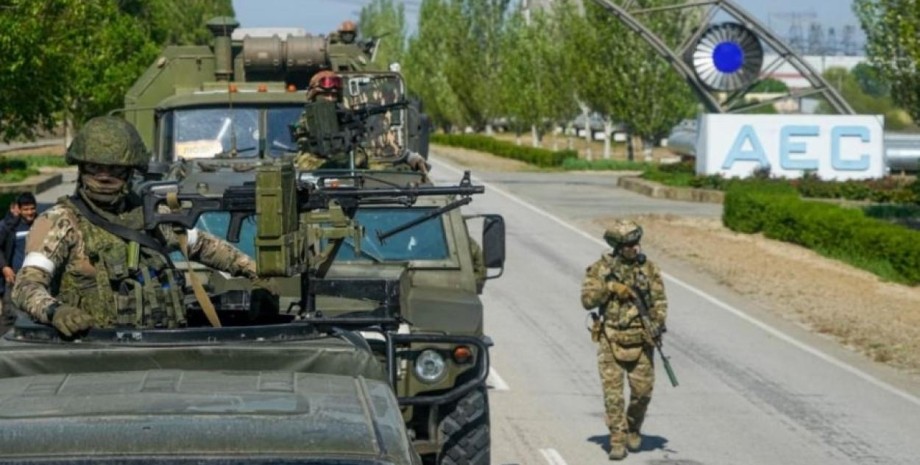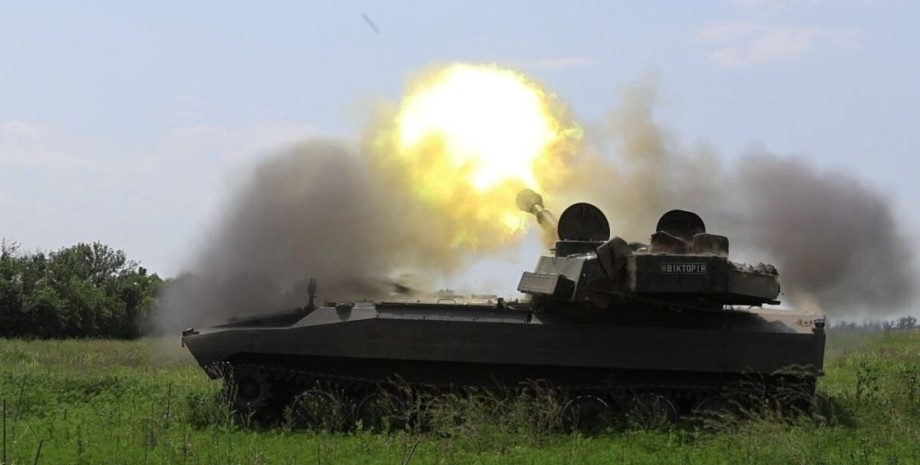
It is widespread that the world is at the threshold of the next military revolution. Shoi is about to change the nature of war, like gunpowder, tanks, planes and atomic bomb in previous eras. Modern states are actively trying to use the AI power for military purposes. China, for example, has announced its intention to become a world leader in the field of AI by 2030. In his "new master plan, the AI" proclaims that "AI is a strategic technology that will lead in the future.
" For his part, Russian President Vladimir Putin said, "The one who will become the leader in this realm will become the ruler of the world. " In response to the challenge thrown by China and Russia, the United States has committed themselves to the "third transition" strategy. They will invest considerable funds in the AI, autonomy and robotics to maintain their advantage in defense.
Focus translated the text of Anthony King, dedicated to the review of Paul Sharre's book and the issues of AI in the war. In view of these dramatic events, military commentators were seriously interested in the issues of military use of AI. For example, in the recent monograph, Ben Buchen and Andrew Imry claim that AI is a "new fire power. " Autonomous arms, managed by AI, not a person, will become more accurate, faster and deadly. It embodies the future of the war.
Many other scientists and experts agree with them. For example, Stuart Russell, a prominent computer and a pioneer AI, devoted one of his lectures at the BBC in 2020 to the military potential of the AI.
He declared the appearance of robots and killer robots and described a scenario in which a deadly quadcopter is armed with an explosive device in size: "Anti-personnel mines can destroy all men in the city aged 16 to 60 years or all Jewish citizens in Israel, and, and, Unlike nuclear weapons, they will leave the urban infrastructure intact. " Russell summed up: "8 million people will surprise why it is impossible to protect them from being trained and killed.
" Many other scientists, such as Christian Broze, Ken Payne, John Arkilla, David Gambling and John Antal, share Russell's opinion that with the development of the second-generation, the appearance of lethal autonomous weapons-for example, swarms of drones-killer-almost inevitable. Military revolutions are often less radical than their supporters initially assumed.
The revolution in the military affairs of the 1990s certainly played an important role in the discovery of new operational capabilities, but it did not eliminate uncertainty. Similarly, some discussions about the fatal autonomy of the AI are clearly hyperbolized, distorting the idea of how the AIs works and what its potential impact on military operations in a possible future.
Although remote and autonomous systems are becoming more and more important, the probability that autonomous drone swarms will be replaced by troops on the battlefield or that supercomputers will replace human commanders. AI became a major research program in the 1950s. He then worked on the basis of symbolic logic: programmers encoded input for processing AI. This system has become known as old good artificial intelligence.
AI made some progress, but since it was based on manipulating the given symbols, its applicability was very limited, especially in the real world. Therefore, since the late 1970s and during the 1980s there was "stagnation of AI". Since the late 1990s, the second-generation AI has made several breakthroughs due to its large data, huge computing capacities and algorithms. There have been three epochal events. On May 11, 1997, the Deep Blue Company IBM won Harry Kasparov, World Chess Champion.
In 2011, IBM Watson's computer won "Jeopardy!". It is even more noteworthy that in March 2016, Alphago beat the World Champion in Group Sidol with a score of 4: 1. Deep Blue, Watson and Alphago were important milestones in an unusual trajectory. In two decades, the AI went from disappointment and failure to incredible triumphs. However, it is important to understand what the second generation can not and what the second -generation can. It was developed on the basis of neural networks.
Machine training programs process huge amounts of data through their networks, adjusting the weight that the program attaches certain data fragments until it eventually generates connected answers. The system is likely and inductive. Programs and algorithms know nothing. They do not know the real world and in the human sense do not understand the value of the data processed.
Using algorithms, the AI machine learning simply builds a statistical probability model based on mass repetition of experiments. Thus, the second -generation AI shows numerous correlations in the data. While it has enough data, probabilistic induction remains a powerful prediction tool. However, AI does not recognize cause and effect or intentions.
Peter Til, one of the leading technological entrepreneurs of the Silicon Valley, eloquently formulated the restrictions of the AI: "Forget about the scientific and fantasy fantasies. The real power of the real-life AI is to apply it in relatively daily tasks, such as computer vision and data analysis. " So, although machine learning is far superior to a person in limited mathematical tasks, it is very fragile.
Due to the full dependence on the data on which it was trained, even the slightest change in the actual environment or data makes it futile. The fragility of inductive machine learning based on data is very important for the prospect of the AI military revolution. Proponents and opponents of the AI implies that in the near future autonomous drones will be relatively easy to fly, identify and strike goals, for example, in urban areas.
In the end, the autonomous switches of drones have already been demonstrated - however, in artificial and controlled conditions. However, in reality, it will be very difficult to teach autonomous controls to conduct combat operations on land. The environment is dynamic and complex, especially in cities where civilians and soldiers are mixed. There are no obvious data on which a swarm of drones could be reliably learned - the situation is too variable.
It is also not easy to understand how the algorithm can make team decisions. Such decisions require the interpretation of heterogeneous information, balancing political and military factors, and for all this requires judgment. In his recent article, Avold Farb and John R. Lindsey claim that AI is best suited for simple solutions with perfect data. The decisions of the military command are related to complexity and uncertainty.
It is noteworthy that although Google and Amazon are leading data processing companies, their executives do not think that the day will come when the algorithm will make strategic and operational solutions for them. Data, which are rapidly processed by algorithms, help their leaders understand the market with such depth and accuracy with which their competitors cannot compare. Information advantage led them to dominance. However, machine learning did not displace the executive function.
Therefore, it is unlikely that deadly autonomous drones or killer work, managed by artificial intelligence, will take place in the battlefield in the near future. It is also unlikely that commanders will replace computers or supercomputers. However, this does not mean that AI, data and machine training are not crucial for modern and future military operations.
It is important to understand that the functions of AI and data are not primarily related to mortality - they are not a new firing power, according to some. Data - digitized information stored in cyberspace - are crucial, because they give states a broader, deeper and more correct idea of themselves and their opponents.
When huge arrays of data are effectively processed by artificial intelligence, it will allow military commanders to perceive the combat space with still unattainable depth, speed and resolution. Data and AI are also crucial for Cyberoperatives and information campaigns. They have become indispensable for defense and attack. AI and data are not so much a new fire power as a new form of digitized military intelligence that uses cyberspace as a new huge resource of information.
AI is a revolutionary way to look at the "other side of the hill. " Data and AI are a critical function of intelligence for the modern war. Paul Sharre, a well -known military commentator, argued that she would inevitably lead to lethal autonomy. In 2019, he published his Bestaseller's Army Book, which traces the development of remotely controlled and autonomous weapons systems.
In it, Sharre suggested that she was about to cause a revolution in military affairs: "In future wars, cars can make decisions on life and death. " Despite the fact that the potential of the AI is still admiration for him, he has now changed his mind. Sharre's new book "Four Fields of Battle", published in February 2023, fundamentally reviews its initial arguments. In it the author deviates from the catastrophic picture, which he depicted in the book "Army of Nobody".
If the "Army" was an essay in the genre of science fiction, then "four fields of battle" - work on political economy. It deals with specific issues of rivalry between major powers and industrial strategies and regulation systems that underlie it. The book describes the consequences of digital intelligence for military confrontation. Sharre analyzes the regulatory framework required for the use of data.
He substantially states that the advantage of data and AI for their processing will be decisive in military plan in rivalry between the US and China. Data will provide a serious advantage in intelligence. According to Sharre, there are four critical resources that will determine who wins the intelligence in these race: "Countries that lead in four areas - data, calculations, talents and institutions [technological companies] - will gain a serious advantage in the capacity of the AI.
" He argues that the US and China have come to the fight not to life, but to death for these four resources. Both China and the United States are now fully aware that one who has an advantage in the AI will have significant political, economic and, most importantly, military benefits. He will know more than the enemy, will be able to use military force more efficiently, dominate the information and cyberspace and become more deadly.
The Book of Four Fields of Battle describes competition for data and AI between China and the United States. The book outlines recent events and evaluates the relative advantages of both countries. China is still behind the US in several areas. The United States attracts leading talents and leads in research and technology: "China is a deaf about the production of chips. " However, Sharre warns the United States against laurels.
The book is imbued with fear that the United States will be behind the data. Therefore, Sharre emphasizes the benefits of China and its rapid progress. With 900 million Internet users, China generates much more data than the United States. Some spheres of economy, such as passenger transportation, are much more digitized than in the United States. WeChat, for example, has no American analogue. Many Chinese applications are superior to American.
In addition, the Chinese state is not limited to legal boundaries or concerns of civil society regarding privacy. The Chinese Communist Party actively monitors the digital profiles of its citizens - it collects their data and registers their actions, and in cities uses the technology of face recognition to identify personality.
State control is beneficial to Chinese technological companies: "Large-scale CCP investments in intelligence surveillance and social control have contributed to the growth of Chinese AI companies and linked them with close tips with the government. " Synergy between government and technology in China is very close. China also has significant regulation benefits compared to the US.
The Chinese Communist Party supports technological giants such as Baidu and Alibaba: "Chinese investments in technology bring dividends. " Sharre summarizes: "China not only forms a new model of digital authoritarianism, but also actively exports it. " How will the US government withstand China's desire for data in the field of data and AI? There are "four battlefields" very interesting here - and they contrast significantly with Charrr's reasoning in the "Army of Nobody".
In order for the US government to use the military potential of data, serious changes in the regulatory framework are required. Armed forces need to form deep partnerships with the technological sector. They "will have to go beyond traditional defense contractors and attract startups. " It's not easy.
Share notes a complex regulatory environment in the United States compared to China: "In the US, large technological corporations of Amazon, Apple, Meta (former Facebook) and Google are independent centers of government, which are often hostile to the government on specific issues. " Share talks about a high -profile protest in Google in 2017, when employees refused to work on the Ministry of Defense's contract at the Maven's project.
The skeptical attitude to the military use of the AI is stored in some parts of the American technological sector. American technological companies may not want to work with the Armed Forces, but the Ministry of Defense also involuntarily impedes the partnership of the military with the technological sector. The Ministry of Defense has always had a close relationship with the defense industry. For example, in 1961, President Dwight D.
Eisenhower warned of the threat that the "military-industrial complex" is for democracy. The Ministry of Defense has developed the process of purchasing and concluding contracts, which was designed mainly for the purchase of high -tech platforms: tanks, ships and aircraft. Lockheed Martin and Northrop Grumman have become suppliers of weapons that meet the specific specifications of the Ministry of Defense. Technological companies work differently.
As Sharre's interviewees noted: "You can't buy AI just as you buy ammunition. " Technological companies do not sell specific opportunities as weapons. They sell data, software, computing capacities - after all, they sell experience. Algorithms and programs are best developed by it in connection with very specific tasks. The full potential of some programs or algorithms to solve a military task may not be immediately obvious, even for the technological company itself.
Therefore, technological companies operating in competitive markets prefer a more flexible, indefinite system of contracts with the Ministry of Defense - they need safety and rapid financial return. Technological companies seek cooperation, not just a platform contract. The US military, and especially the Ministry of Defense, did not always easily find a new approach to contracting. In the past, the bureaucracy was too slow to respond to their needs - the purchase process took 7 to 10 years.
However, despite the fact that there are many contradictions and the system far from perfection, Sharre notes the transformation of the regulatory environment. It describes the formation of a new military-technical complex in the United States. The Maven's project is an example of this process. In 2017, Bob Work issued a note that became famous, in which he announced the creation of an "interfunctional group on an algorithmic war" - the Maven project.
Since the emergence of drones and military satellites during the Global War with terrorism, the US military began to receive full -off video materials. These shots were priceless. For example, using Gorgon Stare, a round -the -clock air surveillance system, the US Air Force was able to trace the explosion of a replaced car in Kabul in 2019, which killed 126 civilians and find the location of the conspiratorial apartments used for attack. However, this process was too slow.
Therefore, the Air Force began to experiment with computer vision algorithms to sift a full -flowed video. The Maven's project was intended to expand the extent of the Air Force success, but a new contract environment was needed. Instead of a long procurement process, Work has introduced 90 days sprint. The companies had three months to show their usefulness. If they made progress, their contracts continued, if not - they took off.
At the same time, Work has removed the secrecy of unmanned aerial vehicles so that Maven's project could teach his algorithms. Until July 2017, Maven's project had an initial operating system capable of identifying 38 different classes of objects.
До кінця року її було розгорнуто в операціях проти ІДІЛ: "Інструмент був відносно простим, він ідентифікував і відстежував людей, транспортні засоби й інші об'єкти на відео з безпілотників ScanEagle, які використовували спецпризначенці".
Після появи проєкту Maven Міністерство оборони висунуло низку інших ініціатив, спрямованих на стимулювання партнерства між військовими й технологіями.
Відділ оборонних інновацій прискорив розвиток відносин між міністерством і компаніями в Силіконовій долині, укладаючи контракти за 26 днів, а не за місяці або роки. За перші п'ять років своєї роботи Відділ оборонних інновацій видав контракти 120 "нетрадиційним" компаніям.
Під керівництвом генерал-лейтенанта Джека Шанахана Об'єднаний центр штучного інтелекту зіграв важливу роль у розвитку партнерства між збройними силами й технологічними компаніями для надання допомоги людям і операцій із ліквідації наслідків стихійних лих, а також розробляючи програмне забезпечення для картографування лісових пожеж і оцінки наслідків стихії — чи передбачають ці приклади в тексті Шарре ширше військове застосування, неясно.
Після перших труднощів Об'єднана інфраструктура оборони, створена генералом Джеймсом Меттісом під час його перебування міністром оборони, реформувала систему закупівель технологій.
Наприклад, 2021 року Міністерство оборони допомогло компанії Anduril розробити систему протидії безпілотникам на основі штучного інтелекту, виділивши на це майже 100 мільйонів доларів.
"Чотири поля бою" — це чудове й інформативне доповнення до сучасної літератури з ШІ та воєнних дій. Книга доповнює нещодавно опубліковані роботи Ліндсі, Голдфарба, Бенджаміна Дженсена, Крістофера Вайта і Скотта Куомо. Головна думка цієї роботи зрозуміла.
Дані та ШІ мають і матимуть велике значення для збройних сил.
Однак дані та ШІ не призведуть до радикальної трансформації бойових дій як таких — люди, як і раніше, у переважній більшості випадків керуватимуть летальними системами зброї, зокрема дистанційними, як показує жорстока війна в Україні Ситуація в бою складна та заплутана.
Людські судження, навички та хитрість необхідні для того, щоб використовувати зброю з максимальною ефективністю.
Однак будь-яка військова сила, яка хоче здобути перемогу на полях битв майбутнього, муситиме використати потенціал великих даних — їй доведеться оволодіти оцифрованою інформацією, яка заполоняє бойовий простір. Люди просто не здатні зробити це самотужки.
Тому штабам знадобляться алгоритми та програмне забезпечення для обробки цих даних.
Їм потрібне тісне партнерство з технологічними компаніями для створення таких систем, а також фахівці з вивчення даних, інженери та програмісти на самих оперативних командних пунктах, щоб змусити їх працювати.
Якщо збройні сили зможуть це зробити, дані дадуть їм змогу бачити всю глибину та широту бойового простору. Це не вирішить проблем військових операцій — туман і тертя війни залишаться.
Але, спираючись на дані, командири зможуть ефективніше та раціональніше використовувати свої сили. Дані підвищать летальну міць збройних сил і їхніх бойових груп.
Російсько-українська війна вже дає початкове уявлення про переваги військових операцій, орієнтованих на дані, перед противником, який досі діє в аналоговому режимі. Книга Шарре — це заклик до того, щоб США не спіткала доля російської армії в Україні.
Ентоні Кінг — завідувач кафедри військових досліджень у Ворикському університеті. Його остання книга "Urban Warfare in the Twenty-First Century" була опублікована видавництвом Polity Press у липні 2021 року.




















Všetky práva vyhradené IN-Ukraine.info - 2022